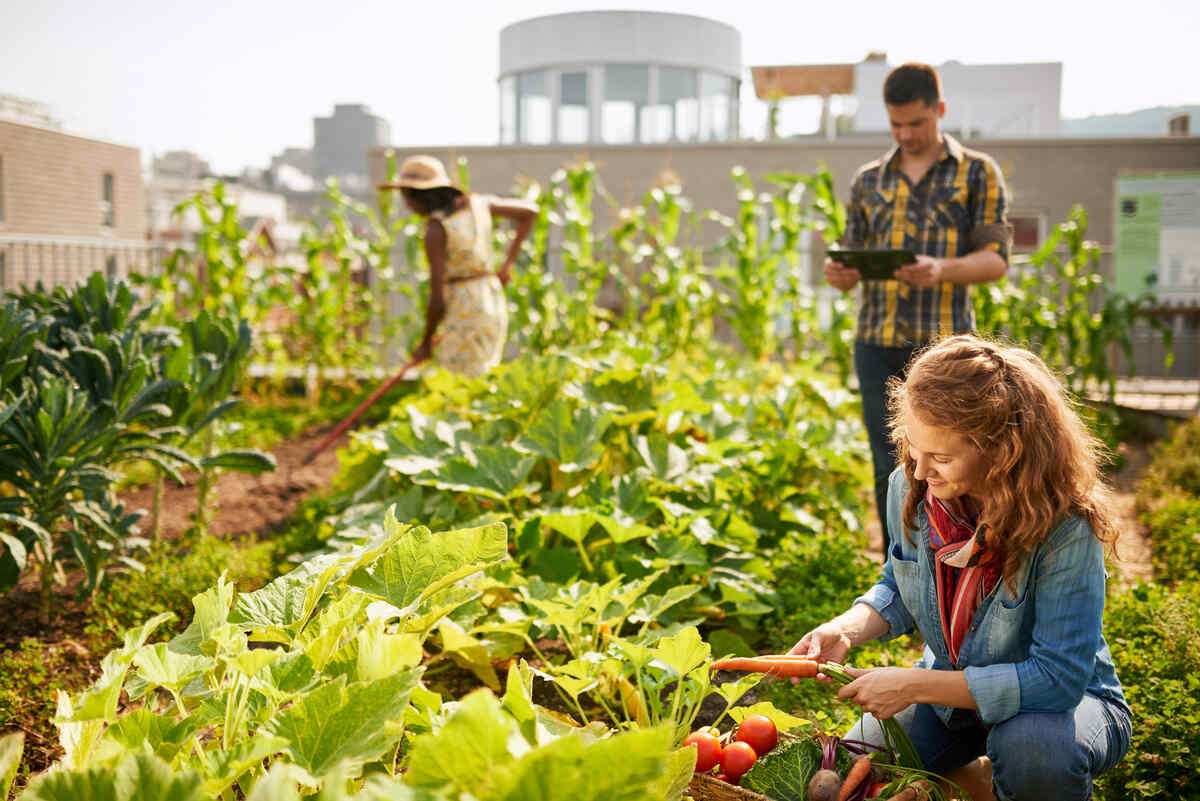The Only Guide to City Blooming
City Blooming for Beginners
Table of ContentsThe City Blooming IdeasCity Blooming - The Facts8 Simple Techniques For City BloomingExcitement About City BloomingThe Best Strategy To Use For City Blooming
Fascinated in growing food offer for sale in the City of Chicago? Considering beginning an area garden? Adjustments to the Chicago Zoning Regulation permit agricultural usages like neighborhood gardens and city farms in lots of components of the city. Below is a listing of frequently asked concerns concerning the regulations and regulations that farmers must think about when intending an urban farming task.
The zoning change does not modify any type of other codes handling composting, building licenses, acquiring or leasing City possessed residential or commercial property, organization licenses or ecological contamination. There are existing codes that control these concerns and they stay in full result and may be relevant to your task. Neighborhood yards are commonly owned or managed by public entities, civic organizations or community-based companies and kept by volunteers.
Urban farms expand food that is meant to be offered, either on a not-for-profit or for-profit basis. Because of their industrial purpose, urban ranches need a service license. Yes. A community garden is enabled to offer excess generate that was expanded on site if the sales are accessory or subordinate to the yard's primary purpose explained over.
Getting The City Blooming To Work
The quantity of garden compost product can not exceed 25 cubic yards at any type of provided time according to the standards in 7-28-715 of the City's Municipal Code. Since the soil at many new garden websites needs amending, garden compost, soil, wood chips, or various other products can be gotten to create or enhance the growing area.

If a building authorization is needed after that the hoophouse will certainly be considered an accessory building. You can learn even more regarding the building license needs by getting in touch with the Division of Buildings. The 25,000-square-foot dimension restriction is intended to stop a solitary area yard from controling an offered block or diminishing the block's existing property or industrial personality.
The limitation does not apply to yards located in Public Open Area (POS) districts. Can there be greater than one area yard that is 25,000 square feet on a single block? Yes. The dimension limitation puts on private yards, not to individual blocks. No. Fence is not called for, nonetheless, gardens that have big parking lot might be needed to install fencing or various other landscaping attributes.
6 Easy Facts About City Blooming Explained
B1 & B2 districts call for that all commercial usage activities be conducted inside your home. R areas limit industrial activity. The regulations show the objective and intent of the Zoning Code. Is fence required for metropolitan farms? Yes. Fences may be needed, in addition to landscaping and testing, for certain parking lot and outside job or storage locations depending on area and the specific task happening.
Yes. Urban farms need structure licenses and zoning approvals before building and construction. Other forms of city evaluation may be needed depending on particular frameworks, tasks, size, landscape design, licensing, public health and stormwater management problems. Numerous of these demands are determined in the project layout or permitting process, nevertheless, the candidate might be liable to separately recognize specific licenses or allows that may be needed.
Yes. The sort of license is determined by what is taking place at the website. The Department of Business Affairs and Customer Defense can assist establish the specific sort of service permit that's needed. Yes. Off street auto parking is needed for most commercial projects in Chicago. The needed variety of auto parking areas is based upon the number of workers functioning on site and not the square footage of the expanding room.
City Blooming Things To Know Before You Get This

An urban ranch can sell garden compost product created on site, nevertheless, the operation should abide with the regulations in 7-28-715 of the Chicago Municipal Code. Aquaponic systems are enabled inside on city farms in numerous zoning areas.
As much as 5 hives or colonies of honey bees might be maintained as an accessory usage. Nevertheless, beekeepers need to sign up with the Illinois Division of Agriculture. For more information concerning the proposed zoning change you may speak to the Department of Housing and Economic Growth, Bureau of Preparation and Zoning at 312.744.8563.
Farming in cities and urban areas A metropolitan ranch in Chicago. Urban agriculture refers to numerous techniques of growing. https://my-store-faa5b0.creator-spring.com/, processing, and dispersing food in city areas. The term likewise puts on the location tasks of pet husbandry, aquaculture, beekeeping, and gardening in a city context. Urban agriculture is distinguished from peri-urban agriculture, which takes location in rural areas beside suburbs.
City Blooming - Truths
It can involve a movement of organic growers, "foodies" and "locavores", that seek to create social media networks started on a common values of nature and neighborhood holism. These networks can develop by means of official institutional support, becoming incorporated into local community preparation as a "change town" motion for lasting why not try this out city growth.
In either case, the much more straight accessibility to fresh vegetable, fruit, and meat products that might be understood via city agriculture can improve food safety and food security while reducing food miles, causing reduced greenhouse gas emissions, consequently adding to climate change reduction. Some of the initial proof of city farming comes from Mesopotamia.